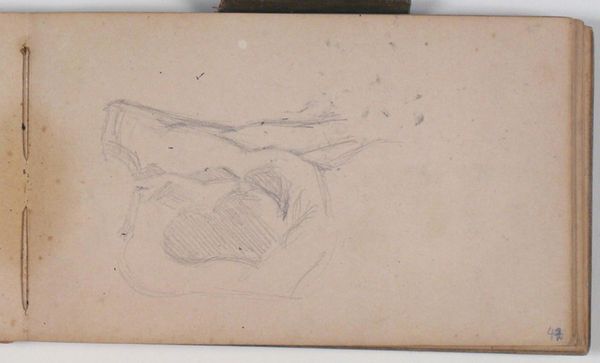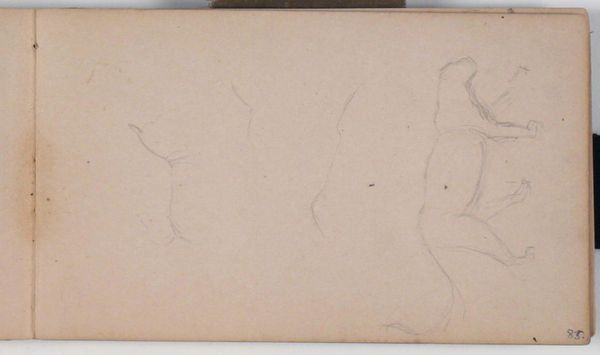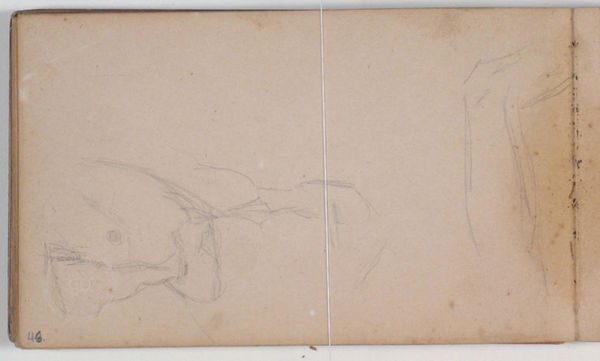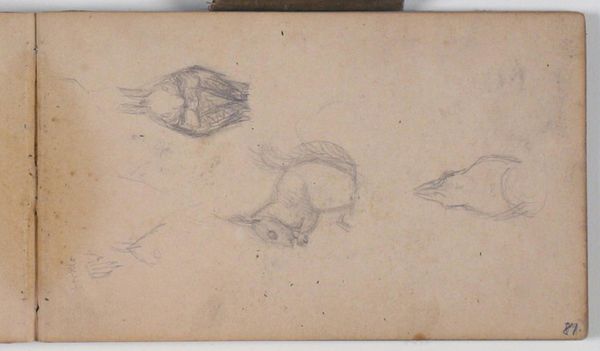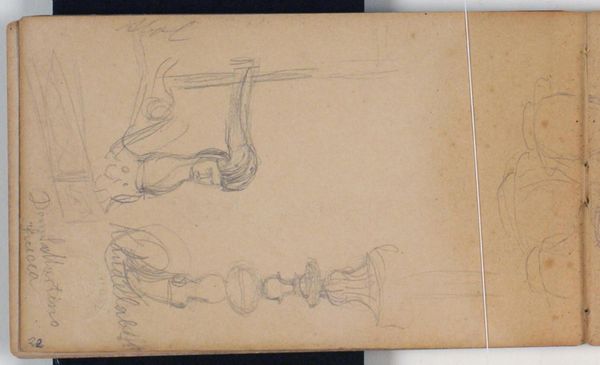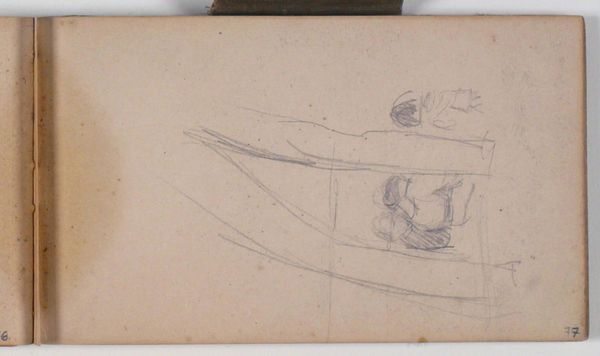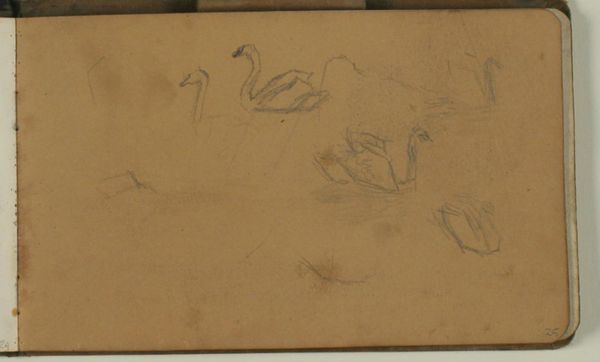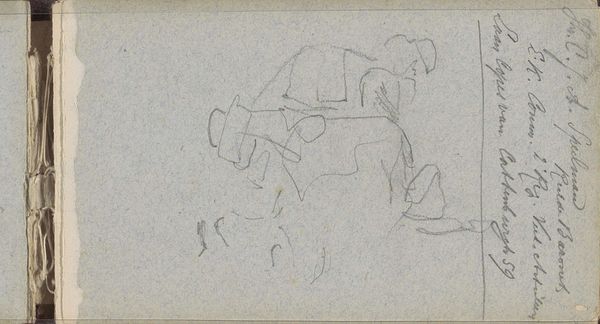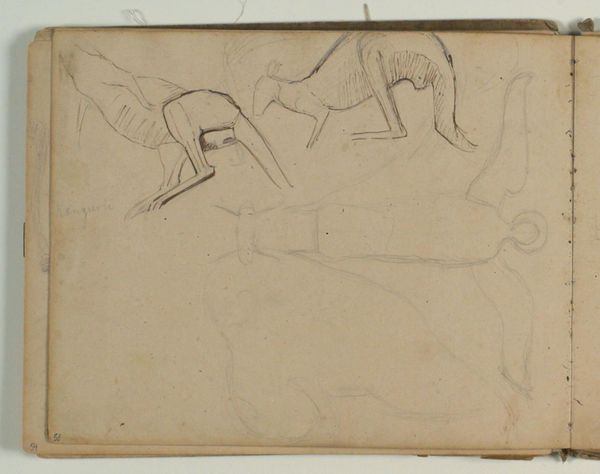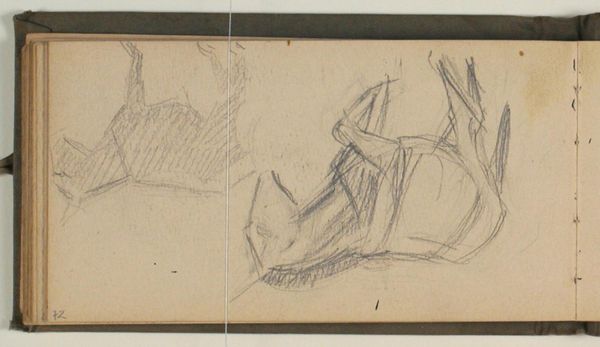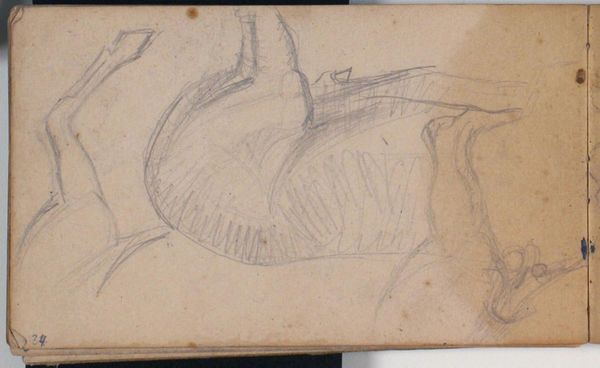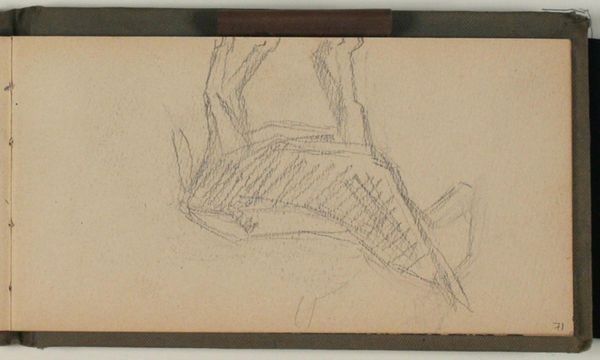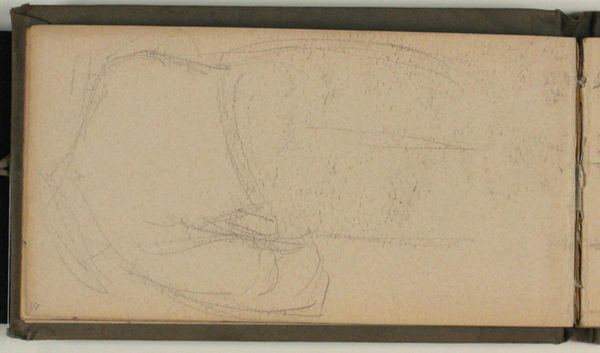
drawing, paper, pencil
#
drawing
#
landscape
#
paper
#
coloured pencil
#
pencil
#
realism
Dimensions: 101 mm (height) x 168 mm (width) (bladmaal)
Curator: Looking at this sketchbook page, I immediately feel a sense of stillness and quiet observation. Editor: Indeed. What we have here is Niels Larsen Stevns' "Fuglerids" from 1896. It's part of the collection at the SMK, Statens Museum for Kunst. A landscape crafted from pencil and colored pencil on paper. Curator: The landscape element is very subdued, almost suggested. More than anything it feels like a study of form, particularly the way he captures these birds in their grounded states. There is no implied motion, and only outlines suggest presence. What symbolic significance might birds carry at this time? Editor: Well, Stevns lived through a period of rapid social change. The Danish Golden Age was fading, giving way to modernism. Perhaps the grounded birds are less about flight and freedom, and more about adapting to the new realities—or the artist contemplating how Denmark's cultural wings were clipped. We see such potent imagery, not dissimilar, in paintings that consider ideas such as wounded angels. It isn't only motion that is lost. Curator: It's interesting you say that, because birds so often signify spirituality, ascent, the soul's journey... But here, the ethereal quality is almost…denied. Do you think Stevns' treatment might be challenging those conventional associations, and more particularly, those feelings? Editor: Absolutely. And the sketchbook format contributes to that sense. It is almost voyeuristic as if these pages represent a stolen glimpse into a private, perhaps uncertain artistic contemplation. Curator: Yes, exactly! And note also the simplicity of line, which is quite stark. Stevns has given us the skeletal presence of birds – they’re defined by light and air as if mere impressions from a dream that flits away once awakened. The realism here makes me believe he wanted the viewer to experience the stillness with him. It serves a specific historical role. Editor: This intimate scale gives them a rather haunting quality as well. Almost like remnants—cultural, historical, artistic remnants—captured just before they fade away. Stevns isn't necessarily creating; he is collecting. Curator: Precisely, and for me it underscores the power of art to capture those transient moments and, perhaps, prompt us to reflect on the meaning we find—or don’t find—in the world around us. Editor: Indeed. It's those absences and fragments that leave us with so much to ponder.
Comments
No comments
Be the first to comment and join the conversation on the ultimate creative platform.
